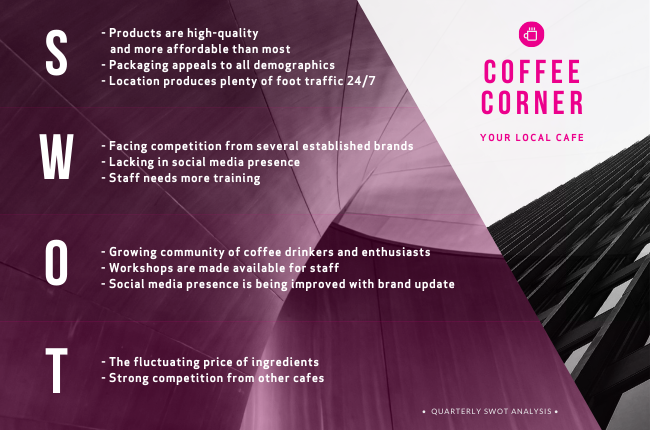Leveraging Your Competitive Analysis in Marketing
These days, it seems like there is so much noise in the competitive market — it can be hard to break through. With new channels to communicate with customers, like social media apps, and new companies entering the market, the world as we know it is evolving daily. It is more important than ever for brands to have a solid grasp on the value they provide their customers and how they compare to their direct competition. Today’s brands must understand how to best reach their target audience and show them that they are not only different from their competitors, but better.
To get gain a competitive edge it’s important to conduct competitive research. Crucial to any business strategy and marketing plan, competitive market research and analysis provides a clear picture of where your company stands with its target market and how it fares in the competitive landscape. By identifying and analyzing your brand’s competitors, you can have a better understanding of potential opportunities and gaps in the market as well as budding threats to your business.

Related: How To Do Market Research Post-Pandemic
The Purpose of Competitive Analysis
There are a multitude of reasons that companies may undertake a competitive analysis but all of them tend to link back to this general purpose: to better understand themselves, their competitors and their future. While all three understandings are vastly important to businesses, they often require a variety of different tactics and types of research methodologies to find the answers. As the competitive environment becomes increasingly crowded, understanding your brand’s position in the market becomes progressively more important in creating and maintaining a successful future.
Crafting Your Market Analysis Template
Companies of any size and industry can always benefit from gaining a better understanding of where they are in the market in comparison to both their direct competitor, businesses that offer a similar product or service, and indirect competitor, businesses that offer a different product or service from yours that could satisfy the same goal or problem. One way to collect and analyze this information is through a specific competitive marketing analysis called a SWOT analysis. A form of competitive intelligence, a SWOT analysis identifies an organization’s strengths, weaknesses, opportunities and threats related to their target market and direct competitors. In conducting a competitor analysis, we examine all elements of a brand’s marketing strategy, including their digital marketing, social media channels, SEO strategy, content marketing, website and general online presence to identify areas of strength or weakness in comparison to competitors.
Competitive research can help answer questions like:
- What is our strongest asset?
- Where do we need to improve?
- Who are our indirect competitors?
- Are we effectively reaching our target audience?
- Are there potential customers we have ignored?
- How are we different than our competitors?
- What trends may affect our business in the future?
- Do we have a sustainable competitive advantage?
These questions are important to ask and answer in order to define your company’s unique value proposition and identify your competitive advantage — essentially, what makes your company better than its competitors.

What Next?
A competitive analysis gives valuable insight and cis incredibly useful in building a brand strategy. Even when a company is experiencing success, stakeholders must continue to build upon and maintain this growth. The subsequent question that always comes up seems to be: “What’s next?” — this question can be daunting even to the leaders of the strongest organizations. However, businesses that don’t think about their strategy daily risk falling behind. Everyone knows one of these stories: the physical video rental business denying the inevitable shift towards online streaming, film camera companies ignoring the opportunities presented by digital photography, and so on. While these business failures seem obvious now, they may not have been as clear at the time. As the age-old saying goes, hindsight is 20-20. These missteps could have been avoided with the assistance of competitive analysis — identifying strengths, weaknesses, opportunities and threats. By first conducting the research and most importantly, implementing the strategies and recommendations offered by the analysis, some of the organizations, known now as these infamous case studies, could have ended up with a different fate. After all, what is the point of having all the right information but refusing to do anything with it?
While undertaking a competitive marketing analysis may seem overwhelming, a tried and true analysis framework can ensure you get the answers you’re searching for and drive your company forward as a thought leader in the industry. Competitor analysis can help your organization determine if your messaging and marketing are distinct from competitors, ensure you are using the right marketing mix to reach your target audiences, and identify new potential customers and areas for growth.
Looking to conduct a competitive marketing analysis for your digital marketing strategy? Reach out to our market research experts and contact us to get started.



